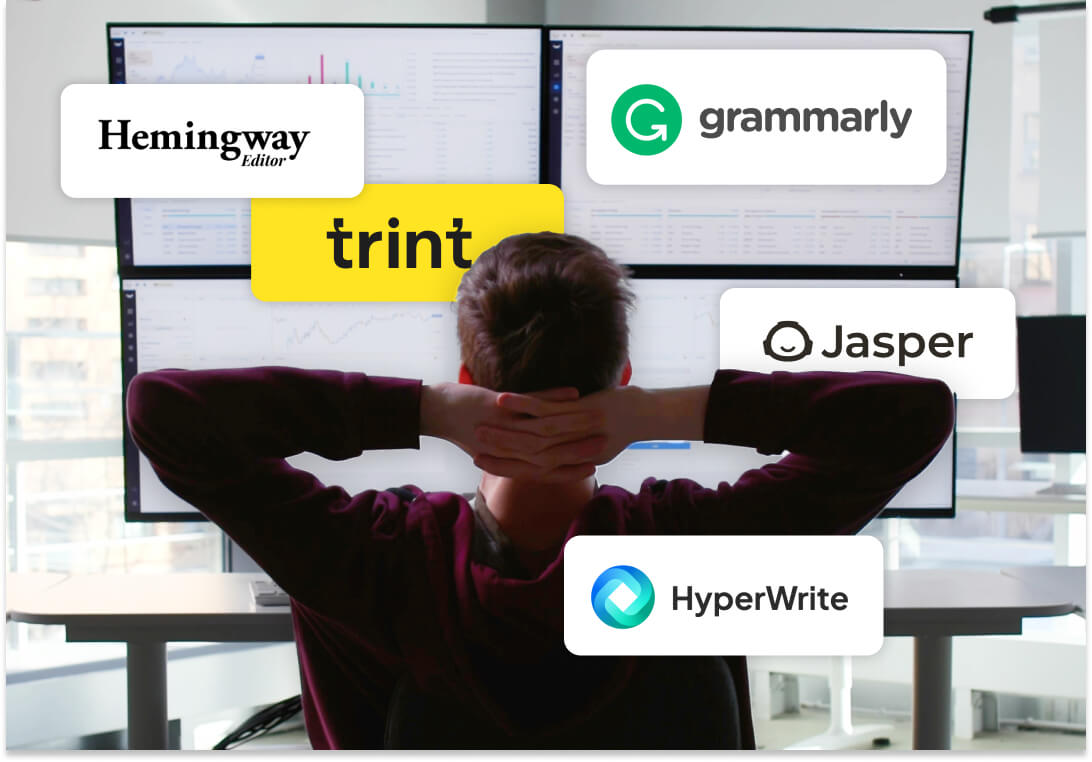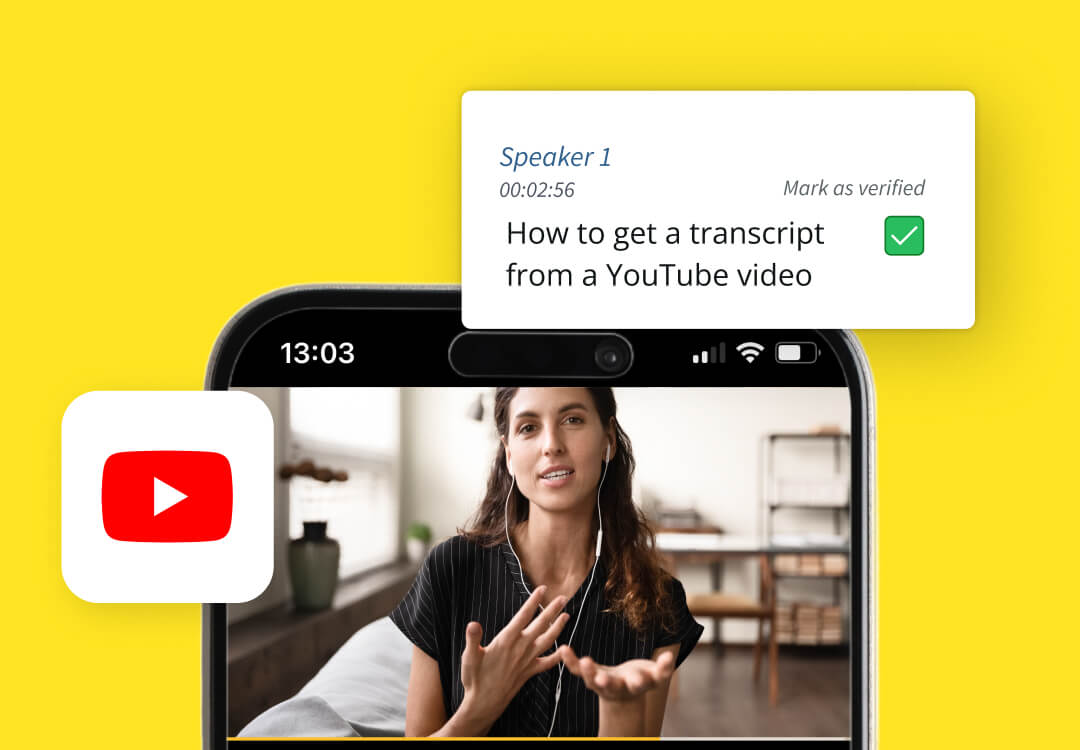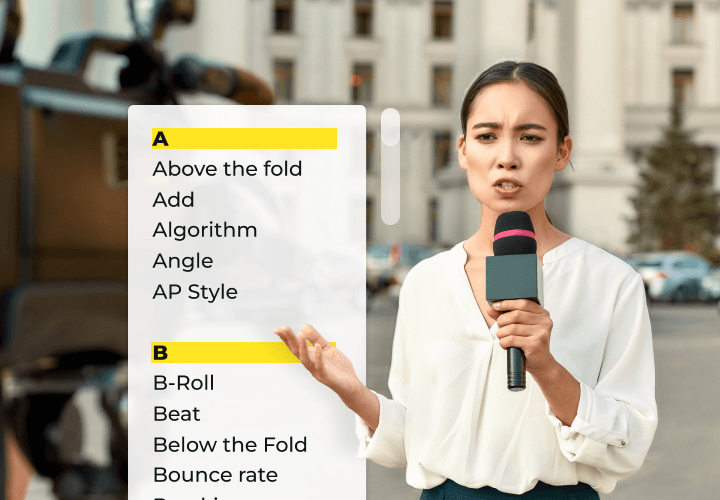
Transcriber noun 1. A person who creates written copies of audio or video material. 2. A job that will soon be replaced by automated transcription.
At Trint, we know a thing or two about transcription. After all, our software helps businesses around the world transcribe documents quickly and painlessly.
But what exactly is transcription and how is it done? And how are technologies like Trint changing the way transcription works in the modern workplace?
In this article, we'll answer all these questions and more. Let's jump in.
- What is a transcript?
- What is a transcriber?
- Which industries use transcription?
- What is automated transcription?
- Are transcription and translation the same?
What is a transcript?
Before we talk about what a transcriber does, we should explain what a transcript is.
A transcript is a written version of spoken content from another medium, like audio or video. For instance, if you type out every word from a video interview, you've made a transcript. In this case, you're the transcriber. (And yes, you might feel like a few precious hours of your life just vanished.)
Transcription can be done manually by a human transcriber or with an automated AI transcription tool.
Types of transcription: verbatim vs non-verbatim
Not all transcripts are alike. There are two broad categories of transcription: verbatim and non-verbatim.
In a verbatim transcript, every single word or sound is transcribed. The goal is to create a written version of the file that is completely accurate and true to the events and speech in the original file. That includes filler sounds — like 'er', 'ah' and 'um' — as well as non-verbal noises, like coughing or laughing. For video content, a verbatim transcription might even include descriptions of the speaker's gestures or hand movements. Verbatim transcripts are sometimes called true, strict or full verbatim transcripts.
With non-verbatim transcription, the transcriber will edit out filler words and background sounds to streamline the transcript and clarify the meaning of the text. This is known as edited or smooth transcription.
In some contexts, the transcriber will go one step further and use their discretion to take out anything that isn't strictly required to understand the meaning of what is being said. This is called intelligent or clean transcription.
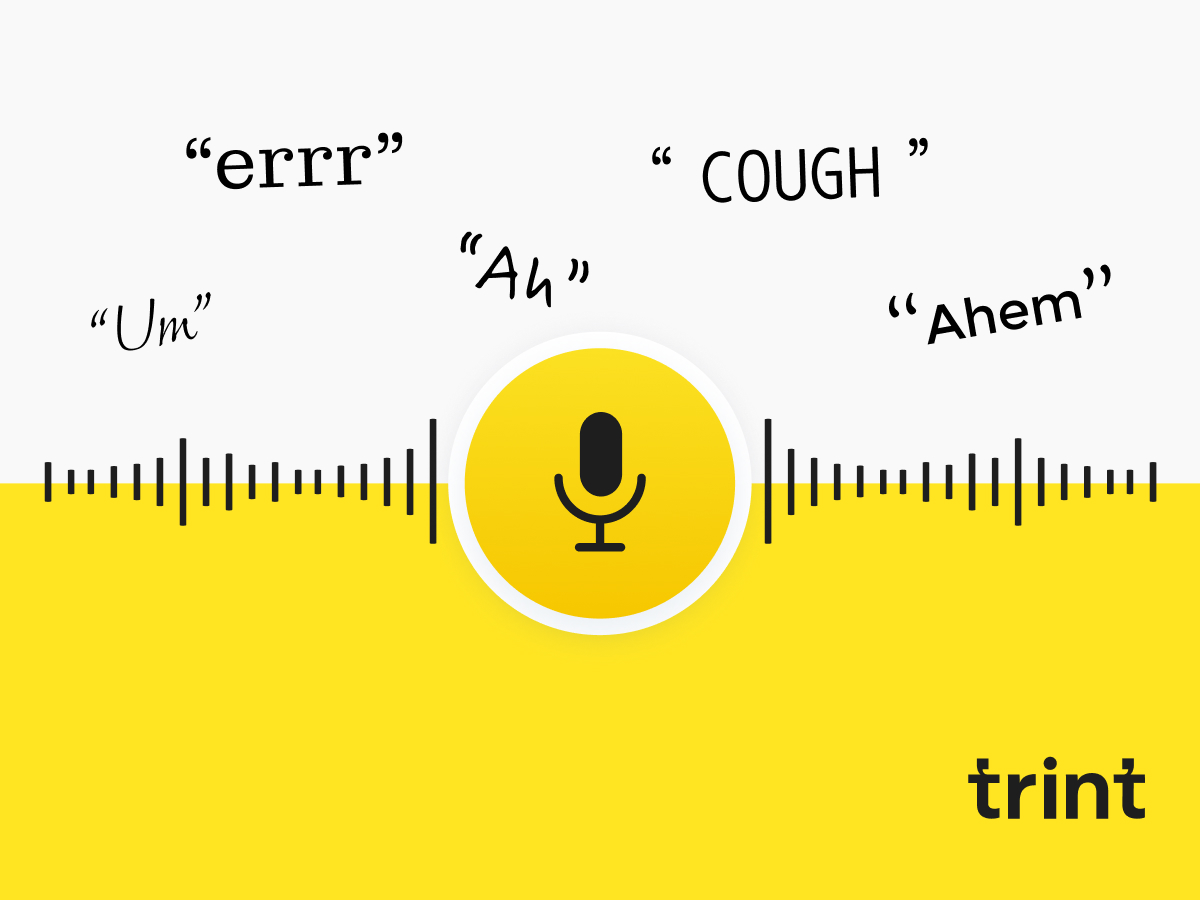
What is a transcriber?
A transcriber is someone who makes a written copy of a non-text file, like an audio or video recording. This role, also known as a 'transcriptionist,' involves listening to or watching a file and meticulously typing out every word.
Transcribers can work for transcription companies, as freelancers, or sometimes in-house. Historically, transcription was also part of the job description for secretaries, personal assistants, admin staff, paralegals and junior office workers in various industries. However, all of this is changing thanks to the rise of automated transcription software like Trint.
What skills does a transcriber need?
- Strong typing skills. Transcribers must type quickly and accurately.
- Attention to detail. Mistakes can be costly, so a transcriber must have excellent attention to detail.
- Excellent written language and proofing skills. There's no room for spelling and grammar mistakes in a quality transcript.
- Hearing abilities. Deaf or hard of hearing people may not be able to transcribe audio without using transcription software or other assistive tools.
- Self-direction and focus. Transcribing long files can be tedious, so sustained focus and good time management are key.
Even for experienced transcribers with all the skills listed above, manual transcription can still be very time-consuming. As a rule of thumb, it will take a transcriber at least four hours to transcribe a one-hour interview recording (Oxford University).
Transcription fees typically depend on the length and complexity of the file. Freelancers or agencies may charge an hourly rate or per minute of audio. So, the costs can soon stack up.
What is automated transcription?
Transcription can be expensive, time-consuming and tedious. But it doesn't have to be like this. Nowadays, instead of hiring a transcriber, companies can use a specialized transcription tool like Trint.
Powered by advanced AI, Trint can transcribe audio, speech or video to text in up to 40 languages, all in a matter of minutes. No more waiting around for hours for a doc to come back from the transcriber: with Trint, your transcript is ready to review and edit in just a few moments.
And you can forget hourly rates and fees. Trint can transcribe complex recordings featuring multiple speakers up to three hours long. Need to transcribe an even longer recording? Simply break it up into smaller files.
Cutting out the transcriber doesn't mean compromising on accuracy or quality, either. Trint's transcripts are up to 99% accurate. Plus, our collaborative editing tools let you fact-check, review and perfect your transcripts to ensure everything meets your standards.
Automated transcription can offer a more secure alternative to human transcribers. Relying on NDAs and enhanced security checks can slow your workflow, and even then you can never completely rule out a data breach — whether it's down to human error or something more sinister. But with automated transcription, your files stay within your organization.
Trint is ISO 27001 certified with encrypted servers in both the EU and USA and we never access your files. So, you can count on us to keep your private files under wraps.
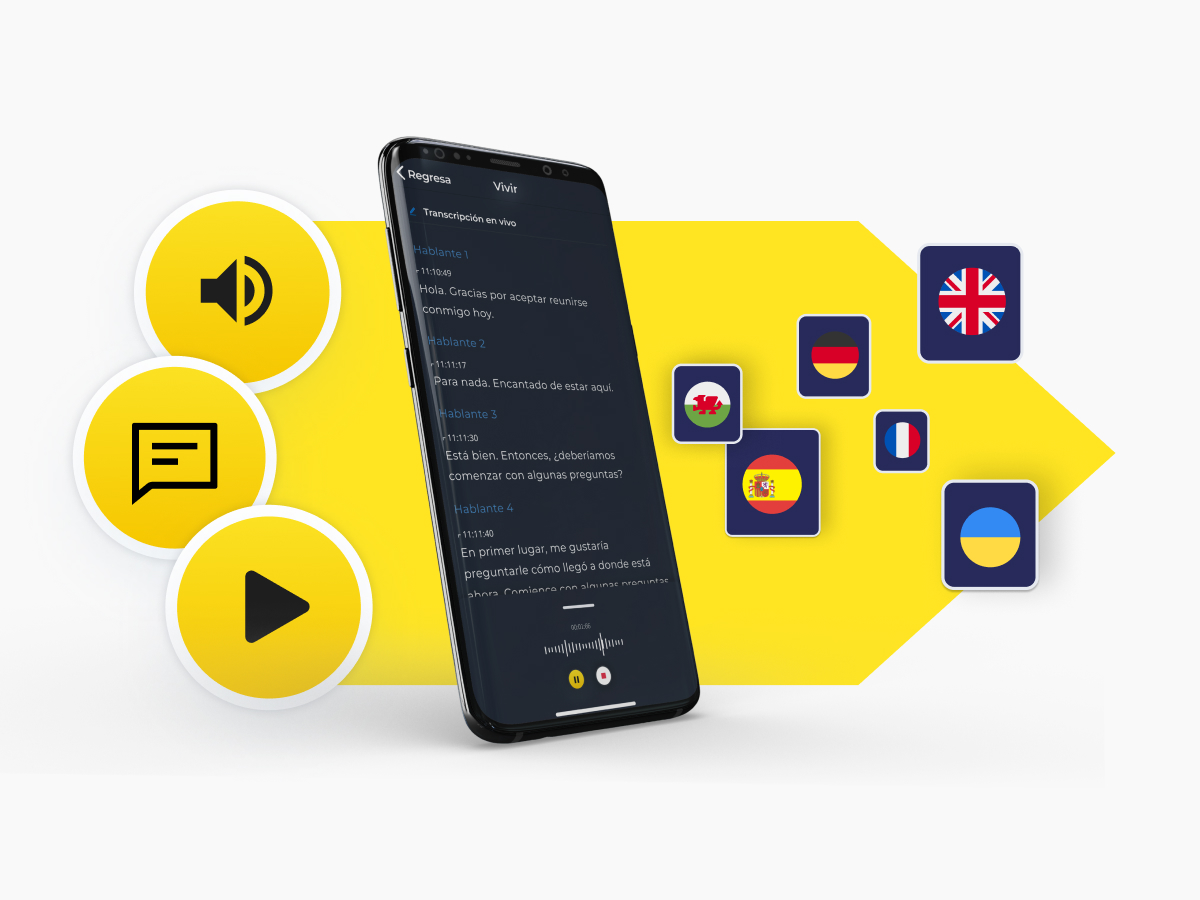
Which industries use transcription?
Businesses across almost every sector rely on transcription to turn raw footage and audio into polished content. This essential process supports workflows in newsrooms, media companies, legal firms, financial businesses and educational settings.
Transcription use cases vary across industries. Legal professionals transcribe witness statements and court proceedings to build their cases. Newsrooms and content creators transcribe interviews and raw footage to create stories and articles. Researchers at educational institutions transcribe interviews to compile, analyze and digitize their research. In the corporate and finance world, transcription makes taking minutes easier and more efficient and simplifies communications.
Another key use case for transcription across all industries is to make content more accessible. It can be used to generate captions for video, to ensure that everyone can enjoy this content. Or, transcription might be used to make a readable version of a video meeting for Deaf or hard of hearing employees and students.
Many businesses also use transcription to supercharge their marketing efforts and do more with less. Marketers and writers can quickly transform audio and visual content into blogs, social posts, newsletters and more — fast.
Are transcription and translation the same?
In a nutshell: no, translation and transcription are not the same. Transcription means creating a written copy of a file in the same language. Translation means converting a text from one language into another.
A file can be transcribed and translated simultaneously, but this is time-consuming and requires a highly skilled, bilingual transcriber. It's much easier to transcribe a file using an automated tool, then translate the transcript — ideally with the same tool.
With Trint, you can translate your transcripts in moments. With over 50 supported languages, Trint makes it easier than ever to reach global audiences without manual translation.
When compared with manual transcription, Trint is a no-brainer — especially for industries like journalism, law, finance, education and content creation. But don't just take our word for it. Try Trint now with a free trial or request a demo to see our game-changing transcription tools in action.
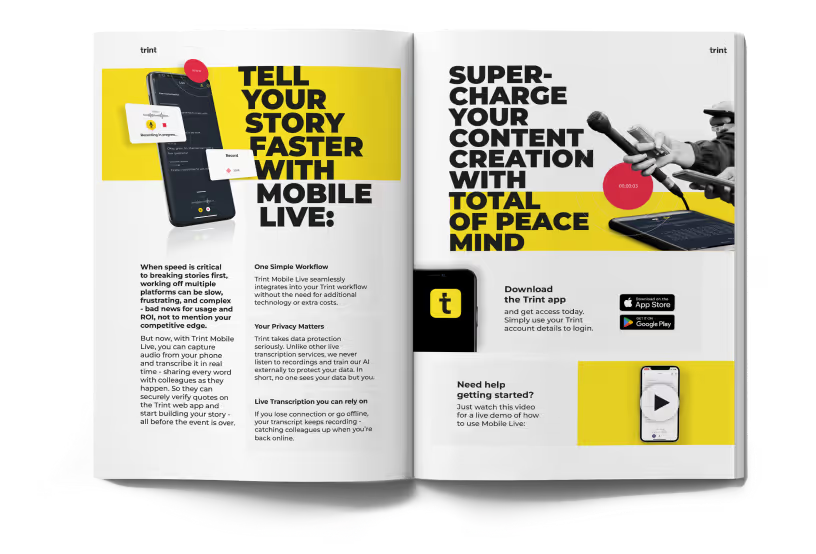
DON'T take our word for it
Download our eBook, Telling Stories Faster With Trint, and hear how Trint is making content creation faster, easier and, most importantly, painless for newsrooms across the world.
Download
